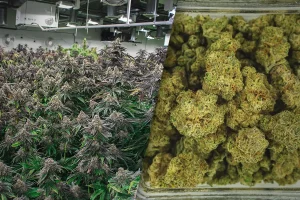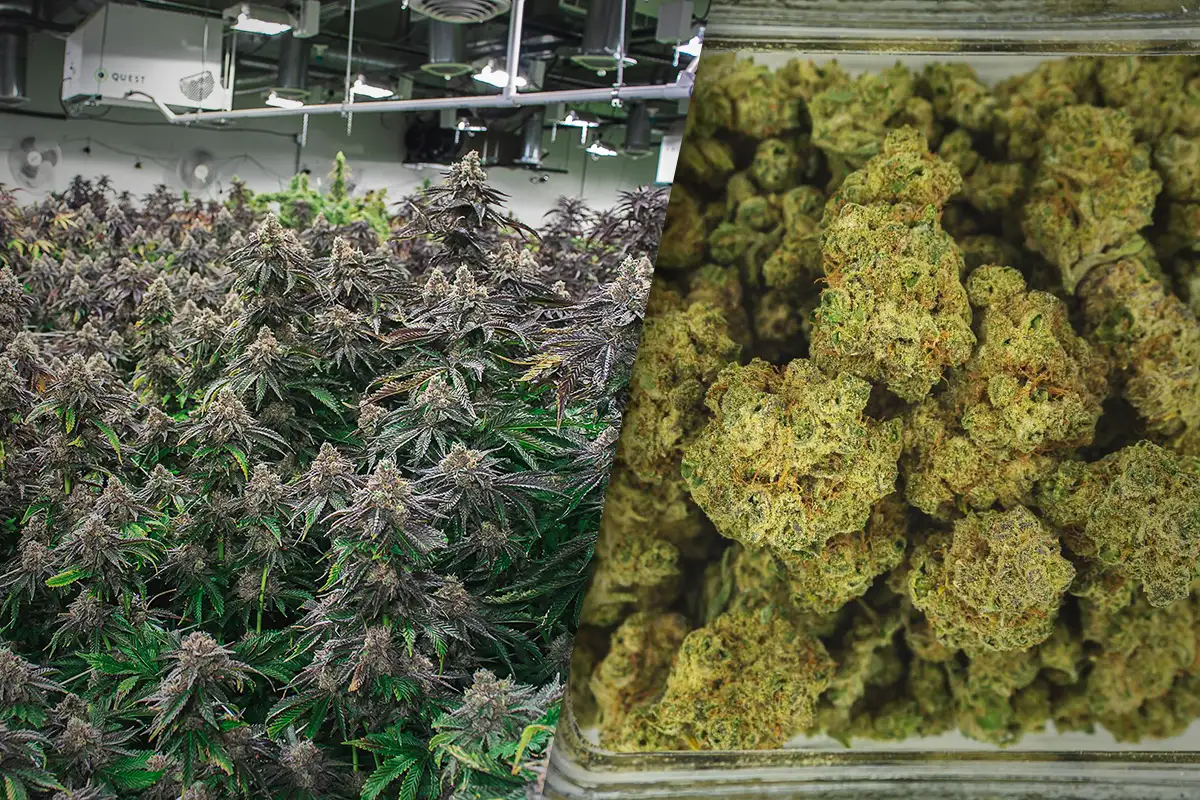The harvest season is the most anticipated time for cannabis growers — when months of careful cultivation finally pay off. But cutting down the plants is only the beginning. Proper harvesting, trimming, curing, and storage techniques are crucial for preserving potency, terpene flavor, aroma, and shelf life. Whether you’re an indoor craft cultivator or tending a large outdoor grow, following the right post-harvest methods can elevate your final product from average to premium.
Below, we break down professional-level tips and troubleshooting techniques for each stage of the process.
Harvesting Cannabis at Peak Ripeness
Timing Is Everything
Harvest too early, and your buds may lack potency. Harvest too late, and THC can degrade into CBN, resulting in a sleepier effect.
Professional growers rely on trichome development and pistil color to determine readiness:
- Trichomes (tiny resin glands) should be mostly cloudy or milky with around 10–30% amber for a balanced effect.
- Pistils (the hair-like structures) should have 70–90% turned brown/orange.
Indoor vs. Outdoor Harvesting
- Indoor growers often stagger their harvests, taking down plants branch by branch to ensure optimal maturity under controlled conditions.
- Outdoor cultivators need to keep a closer eye on weather patterns, especially in northern regions where autumn rains can trigger mold. A well-planned harvest schedule helps avoid crop loss.
Tools & Sanitation
Professional cultivators use sterilized, sharp pruning shears, gloves, and clean surfaces to prevent contamination. Disinfect tools between plants to avoid spreading mold, powdery mildew, or pests.
Trimming: Wet vs. Dry Techniques
Trimming determines not only how your buds look but also how they dry and cure. There are two main approaches:
Wet Trimming (Immediately After Harvest)
- Pros: Easier to remove fan and sugar leaves when the plant is still moist; helps prevent mold in humid areas.
- Cons: Buds can dry too quickly, sometimes leading to harsher smoke.
Pro Tip: Many indoor cultivators favor wet trimming in humid climates to avoid trapped moisture during drying.
Dry Trimming (After Initial Hang-Dry)
- Pros: Slower drying preserves terpenes and leads to a smoother final product.
- Cons: Leaves become brittle, making trimming more labor-intensive.
Pro Tip: Large outdoor farms often hang whole plants upside down in drying barns, then trim once the outer leaves are crisp but the stems still have bend.
Professional Techniques
- Trim around the bud structure without cutting into calyxes.
- Use multiple scissors: one for rough trimming (fan leaves) and one for detail work.
- Keep a trim bin to collect “sugar trim” resinous leaves, perfect for making edibles or concentrates.
Drying: Controlling the Environment
Proper drying preserves cannabinoids and terpenes while preventing mold. The ideal environment:
- Temperature: 60–70 °F (15–21 °C)
- Humidity: 50–60% relative humidity
- Airflow: Gentle, indirect circulation (avoid fans blowing directly on buds)
- Darkness: Keep lights off to prevent THC degradation
Indoor Tip: Use dehumidifiers and oscillating fans to keep air fresh without over-drying.
Outdoor Tip: Invest in a drying shed or barn with climate control to avoid weather fluctuations.
Drying usually takes 7–14 days, depending on bud density, trimming method, and environmental factors. The “snap test”, when small stems snap cleanly instead of bending, signals it’s time to cure.
Curing Cannabis: Enhancing Flavor, Smoothness, and Potency
Curing is where good weed becomes great weed. It allows moisture to redistribute evenly through the flower and enables chlorophyll to break down, resulting in smoother smoke and richer terpene profiles.
Ideal Curing Conditions
- Containers: Glass mason jars or food-grade airtight containers
- Humidity: Maintain 58–62% RH inside the jar (use Boveda or Integra humidity packs)
- Temperature: 60–70 °F (15–21 °C)
- Light: Store jars in a dark place to protect cannabinoids
Burping Schedule
For the first 2 weeks, open jars once or twice daily for 10–15 minutes to release moisture and replenish oxygen. After that, reduce to once every few days. Full curing typically lasts 3–8 weeks, though connoisseurs sometimes cure for several months for peak flavor.
Storing Cannabis Long-Term
Once cured, proper storage prevents terpene loss and potency degradation:
- Use airtight containers to protect against humidity swings.
- Avoid plastic bags, which can build static and strip trichomes.
- Store in a cool, dark place, as excessive heat or light accelerates THC breakdown.
- Don’t refrigerate or freeze buds unless vacuum-sealed, as condensation can lead to mold.
Pro Tip: Label containers with strain, harvest date, and cure duration to keep your inventory organized.
Troubleshooting Common Post-Harvest Problems
Even experienced growers encounter issues. Here’s how to identify and address them:
| Mold or mildew | White fuzz, musty smell | High humidity, poor airflow | Remove affected buds immediately, increase ventilation, lower RH | |
| Over-drying | Brittle buds, harsh smoke | Too much airflow or low humidity | Rehydrate using humidity packs or orange peels for 12–24 h (then remove) | |
| Grassy smell | Chlorophyll not broken down | Rushed drying/curing | Extend curing time, burp more frequently | |
| Loss of terpenes | Bland aroma | Excessive heat/light | Store in cool, dark environment; dry more slowly next time | |
| Uneven moisture | Some buds damp, others crisp | Inconsistent jar humidity | Mix buds periodically, use RH packs | |
Bonus: Special Considerations for Indoor vs. Outdoor Grows
- Indoor growers benefit from precise environmental control, which allows slower drying and curing, maximizing terpene preservation. Many commercial indoor farms use dedicated climate-controlled curing rooms for consistent results.
- Outdoor growers, especially in humid or rainy regions, often harvest early to avoid bud rot. They rely more on hanging whole plants and may use dehumidifiers in barns or sheds to mimic indoor drying conditions.
Final Takeaway
Harvesting cannabis is both an art and a science. From timing the chop to the final cure, each step profoundly impacts the flavor, aroma, potency, and longevity of your buds. By applying professional techniques and knowing how to troubleshoot problems, growers can consistently produce high-quality flower that stands out in today’s competitive market.
Whether you’re an indoor craft cultivator or managing a sun-grown farm, mastering the post-harvest process is key to turning a good season into a legendary one.











